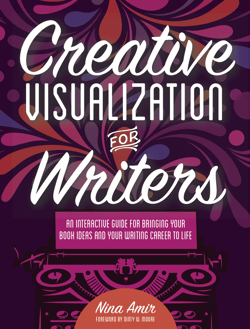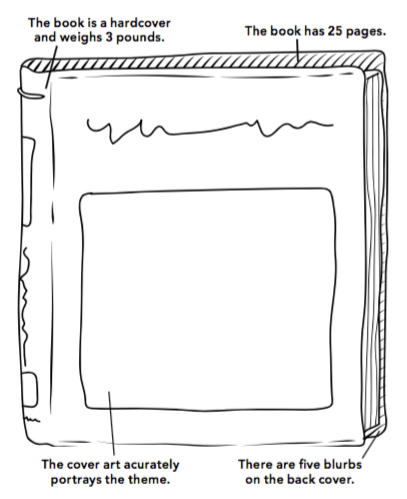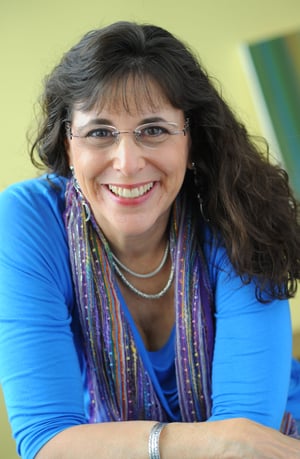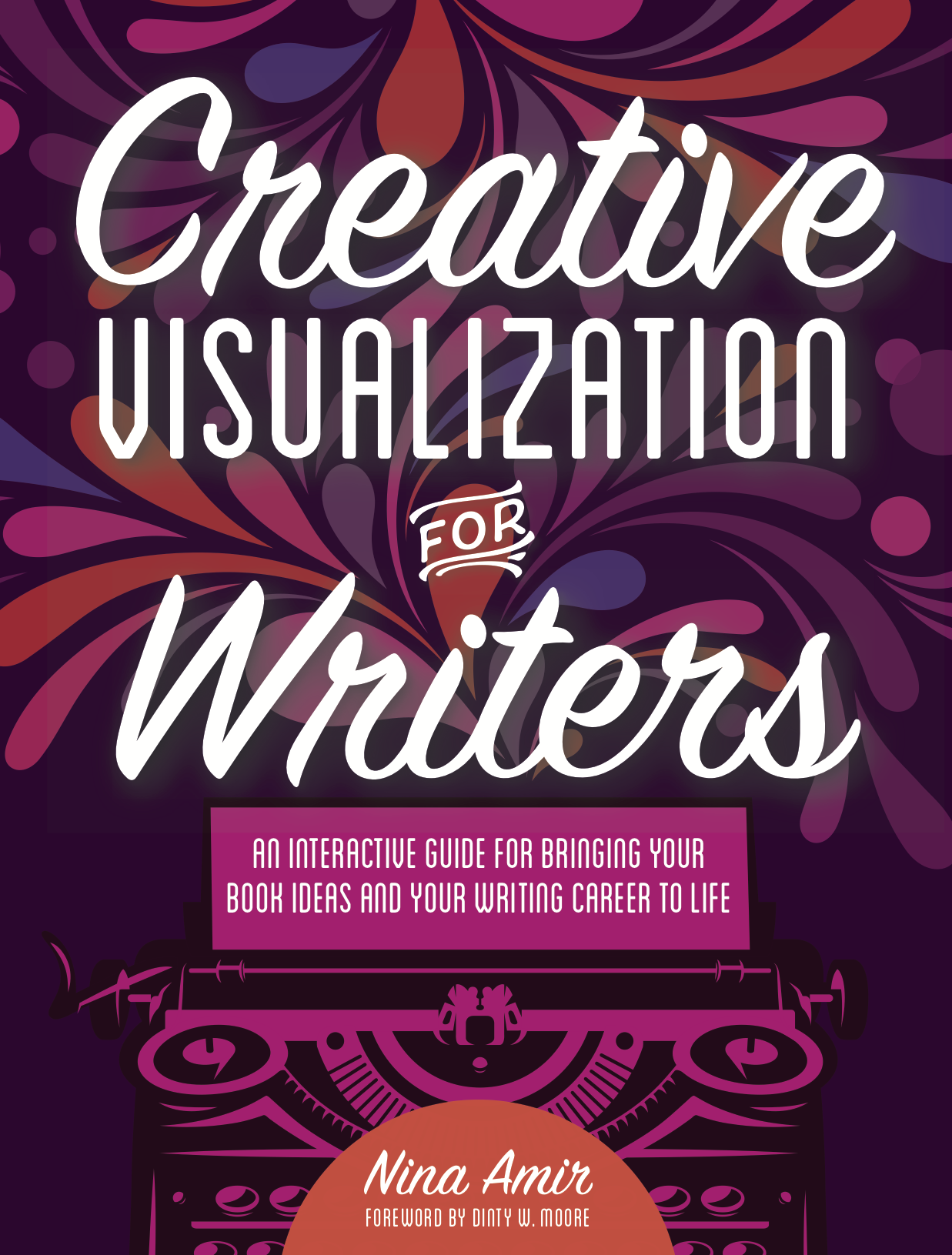 I had a recent conversation with Nina Amir about her new soon to be best-seller, Creative Visualization for Writers and I got some Christmas presents bought...Woo Hoo! ~Mari
I had a recent conversation with Nina Amir about her new soon to be best-seller, Creative Visualization for Writers and I got some Christmas presents bought...Woo Hoo! ~Mari
1. Where did you come up with the idea for your new book, Creative Visualization For Writers?
In 2015, I became aware of the adult coloring book trend. I researched coloring books for writers and found two self-published books but nothing else…and I didn’t feel either one of them were good.
Given that I didn’t think writers had time to sit around and color, I began to brainstorm how to get in on this trend without producing another coloring book for adults.
I decided that such a book needed to be goal driven. Everything in it had to help writers succeed. It needed to be an interactive journal that included focus-driven coloring book pages and affirmation pages and ways to set goals, remove mental blocks to success, visualize a project, and boost creativity.
I happened to meet my publisher at the Book Expo America in June 2015, and I brought up the topic. He had just been researching coloring books for writers! He loved my idea and had been thinking along the same lines—not just a coloring book.
We put our heads together with one of the Writer’s Digest Books sales reps, and the idea took shape. I submitted a proposal, and after two trips to the editorial board, in October 2015, I had a deal.
I have wanted to move into the area of personal development and practical spirituality. I’ve been brainstorming ideas on these topics for years! This one just came to me… Of course, The Author Training Manual included a chapter that discussed visualization, goal setting, and self-discovery. Creative Visualization for Writers takes these concepts farther.
- What messages do you want your readers to walk away with after reading your book?
I’d like readers of Creative Visualization for Writers to finish reading the book and have learned that they have the power to create their success—in more ways than they might have previously thought. They can make their dream of successful authorship real by implementing mental strategies and new focus tools. These may effect their ability to manifest their desire even more than a consistent writing practice and a marketable idea.
I want them to know they can generate ideas and creativity on demand. They can explore what stops them from writing and make new decisions, choose positive and helpful thoughts and form supportive habits. In the process, they can become productive, focused successful writers who achieve their potential and fulfil their purpose.
I hope they go back to the book over and over again to continue dreaming, stretching, visualizing, and creating the writing life and career they desire.
- How about a sample taste of your book…maybe one of your favorite exercises?
There are so many, and I love them all. However, here’s one from the Vision section called Envision Your Book:
A publisher once told me, “When I can see a book in my mind’s eye, I know the idea is worth pursuing and publishing.”
Apply this litmus test to your ideas, goals, and dreams. If you can see them, you can make them real.
Take a few moments to visualize your next book, article, essay, or blog post. See it, feel it, experience it!
Now draw it below. Add notations to your drawing to provide extra details.
Here are some examples:
- The book has 250 pages.
- The book is a paperback and weighs 1.5 pounds.
- There are ten blurbs on the back cover.
- The cover art accurately portrays the theme.
- This article appeared in [magazine name].
- This magazine has a circulation of 1.5 million.
The following illustration accompanies the exercise.

The book is filled with pages on which to write and draw, fabulous illustrations to color, and over 100 exercises.
- What does your writing day/routine look like?
I try to start my day with about 30-45 minutes of meditation, journaling, and a spiritual practice. Or I go exercise.
If I’m not writing a book, my day might include handling customer service issues, contacting people for interviews for my Nonfiction Writers’ University (www.nonfictionwritersuniversity.com) or creating challenges for the members, blogging, working with my website developer, or answering emails (lots of them). I also conduct Author Coaching or Training sessions or Certified High Performance Coaching sessions with clients. I might create videos.
On a day-to-day basis, I may not be writing anything except my blog posts and emails (including ones to my list).
If I’m writing a book, then I block out one to two hours per day six days per week to write. I try to do this first thing in the morning. That doesn’t always work, though. Sometimes I am writing late in the evening or at night when things quiet down.
I break just about ever hour to re-energize. I exercise six days a week; I go to the health club, walk or take a bike ride. This helps clear my mind and allows the busy-ness of my workday to drop away for a bit to I can tap into my thoughts, intuition, and Source. I tend to listen to personal development programs while I exercise (but not on the bike).
I work long hours…I’m at my desk usually by 9:30 a.m. latest. I work until 6 or 7 pm (with an exercise break of 1-2 hours in the afternoon—if I haven’t gone first thing in the morning). Then I have a dinner break and many nights go back to work for a few more hours.
- What are some of the biggest challenges you face as a writer and how do you overcome them?
I sometimes feel overwhelmed with the sheer amount of work before me, especially when a book gets added into the mix. I have way too many projects going at one time most of the time, and I’m constantly promoting and blogging.
I am trying hard to limit the number of projects I work on at any given time. Focusing on what really needs to get done, what is working, what has the biggest payoff, or what is “on purpose” for me helps enormously.
And I utilize what I’ve learned as a Certified High Performance Coach (CHPC). This training has probably helped me overcome challenges more than anything else. Because of my understanding of high performance, I apply many of the same strategies I offer to clients. For instance, I take frequent breaks. I focus on increasing my energy every hour—with deep breathing, movement, drinking water, a few moments outside, or meditation. I drink more water per day than I used to, sleep 7-8 hours per night most nights, exercise, and meditate regularly.
I also create time blocks, especially for creation (writing), and I focus in these blocks. I don’t try to manage time. I manage my attention in the time I have. Doing so helps increase my productivity.
People think of me as highly productive, but I could be way more productive! So I keep adding these high-performance habit into my life, and I become more productive daily.
If I get more done in less time, I have more freedom.
- What’s your recommendation for dealing with page fright (my term for writer’s block)?
I don’t believe in page fright or writer’s block. By creating a condition and giving it a name, we make it real and strengthen the power of this idea.
However, if you find it difficult to write or continually procrastinate, my recommendation is, first, explore your thoughts. You, indeed, may be afraid. Or you have negative thoughts or beliefs that stop you from putting fingers to keyboard and writing. Bring those thoughts to your conscious mind and change them to positive ones. In fact, I focus a fair amount on affirmation in Creative Visualization for Writers (and even provide pages to write them).
Second, figure out your payoff for not writing. (The new book includes an exercise that helps you do so.) Do you get to avoid rejection when you don’t write? Do you get to avoid sharing your work?
When your negative payoff is more attractive than your positive payoff for writing, you won’t write. So discover your positive payoffs—making a positive and meaningful impact with your words, sharing your work, or realizing your dream of seeing your books in a bookstore, for instance. Focus on these, and you will write.
Third, remind yourself why you wanted to write in the first place. If you still resonate with that reason—if it is still important to you—you will write. If it isn’t, you will lack motivation and inspiration. So connect with your WHY if you want to write again.
I hope those tips serve you and your audience.
Thanks Nina! You can purchase her book write here!
About Nina Amir
 Nina Amir is an Amazon bestselling author of such books as How to Blog a Book, The Author Training Manual and Creative Visualization for Writers (October 2016). She is known as the Inspiration to Creation Coach because she helps writers, bloggers and other creative people combine their passion and purpose so they move from idea to inspired action and Achieve More Inspired Results. This helps them positively and meaningfully impact the world—with their words or other creations.
Nina Amir is an Amazon bestselling author of such books as How to Blog a Book, The Author Training Manual and Creative Visualization for Writers (October 2016). She is known as the Inspiration to Creation Coach because she helps writers, bloggers and other creative people combine their passion and purpose so they move from idea to inspired action and Achieve More Inspired Results. This helps them positively and meaningfully impact the world—with their words or other creations.
Nina is a hybrid author who has self-published 17 books and had as many as nine books on Amazon Top 100 lists and six on the same bestseller list (Authorship) at the same time.
As an Author Coach, Nina supports writers on the journey to successful authorship. Some of her clients have sold 300,000+ copies of their books, landed deals with major publishing houses and created thriving businesses around their books. She is the creator of a proprietary Author Training curriculum for writers and other coaches.
She is an international speaker and award-winning journalist and blogger as well as the founder of National Nonfiction Writing Month (www.writenonfictioninnovember.com) and the Nonfiction Writers’ University (www.nonfictionwritersuniveristy.com).
Nina also is one of 300 elite Certified High Performance Coaches working around the world.
For more information, visit www.ninaamir.com or check out her books at www.booksbyninaamir.com.


Leave Comment